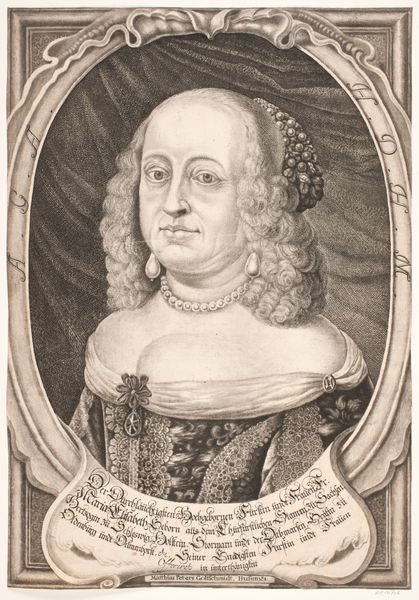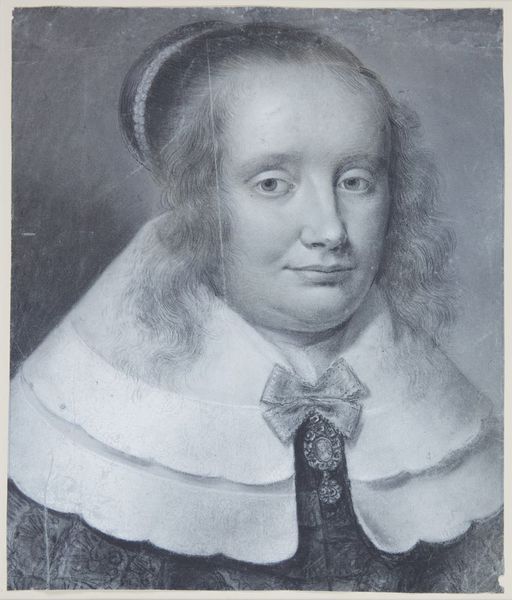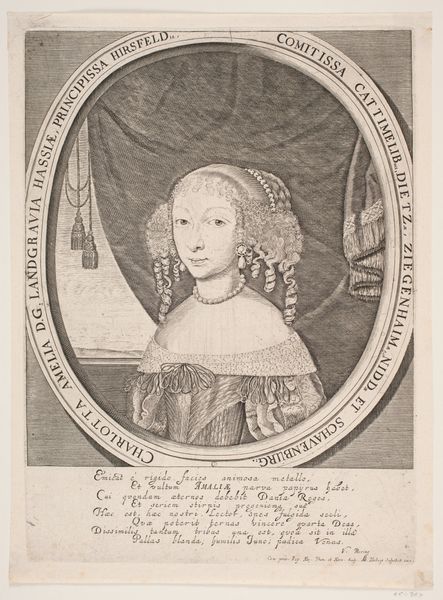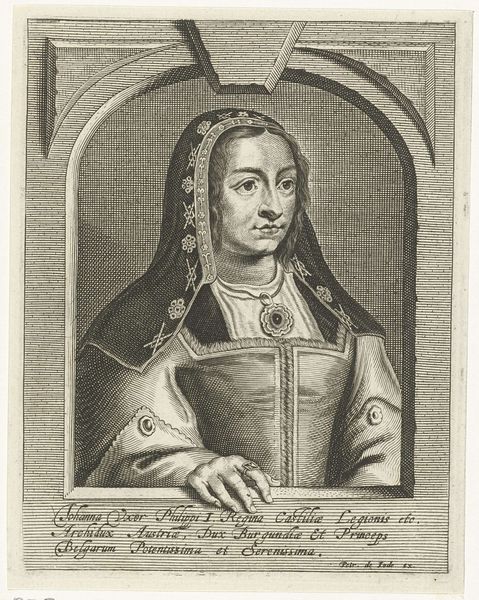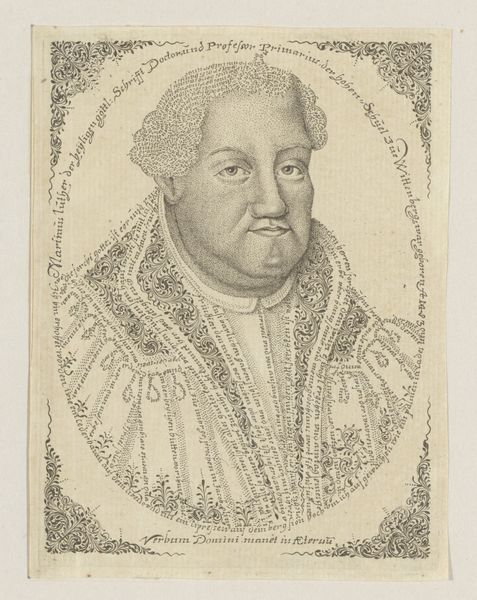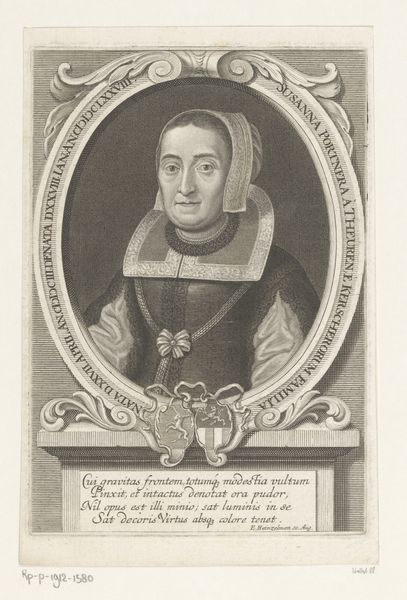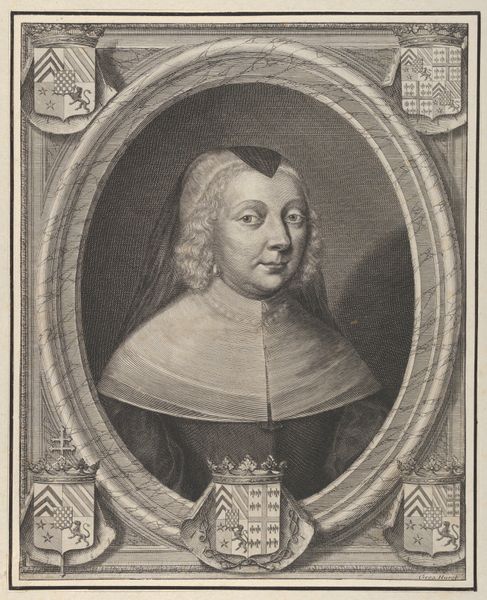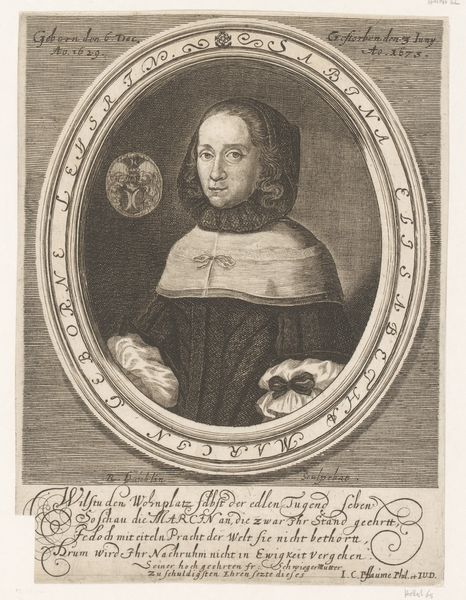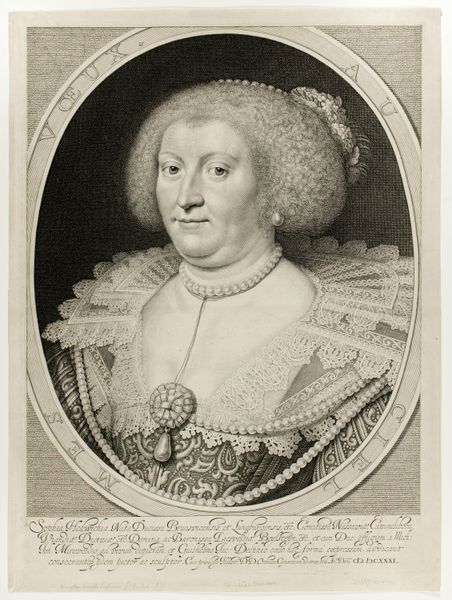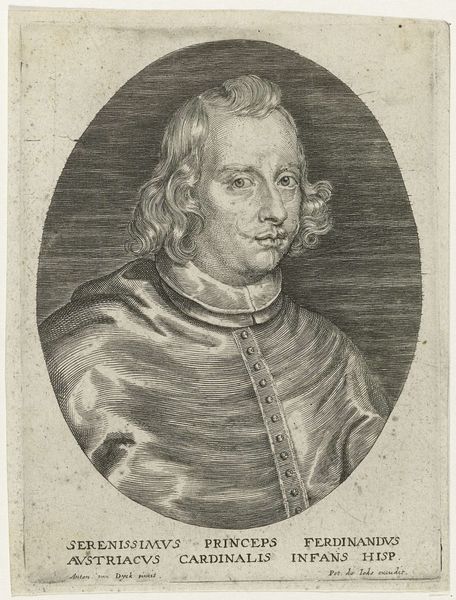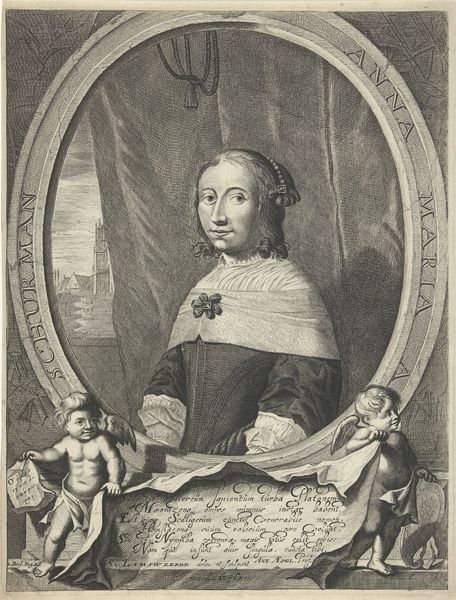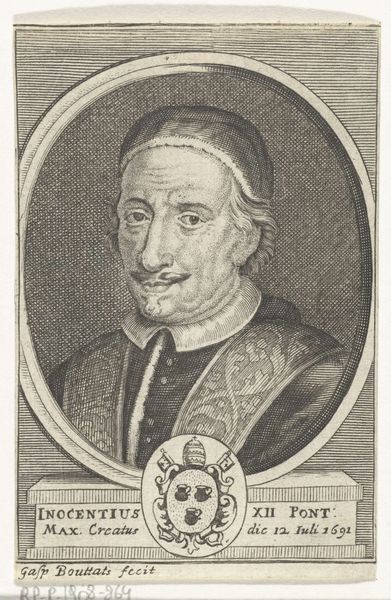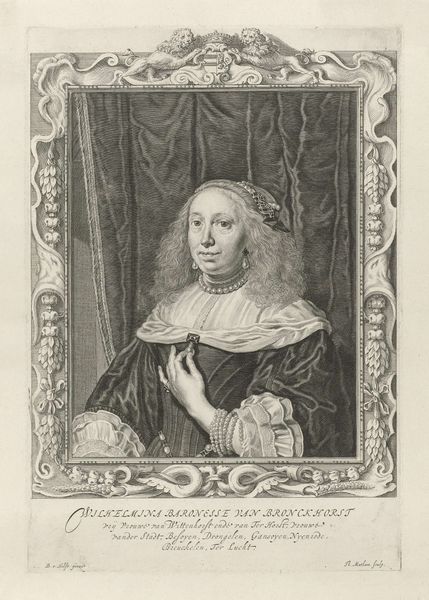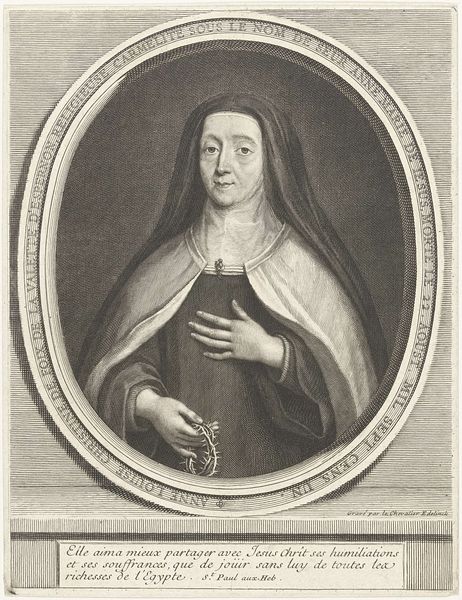
Amelia Elizabeth, Landgravine of Hesse 17th century
0:00
0:00
drawing, print, engraving
#
portrait
#
drawing
#
baroque
# print
#
pencil drawing
#
engraving
Dimensions: Sheet: 16 7/16 x 11 15/16 in. (41.8 x 30.3 cm)
Copyright: Public Domain
Curator: Immediately, what strikes me is its ethereal quality, a delicate dance between light and shadow that softens the features of this... rather formidable looking woman. Editor: Indeed. We’re looking at “Amelia Elizabeth, Landgravine of Hesse,” a 17th-century engraving now housed in the Metropolitan Museum of Art, and thought to be by Ludwig von Siegen. The way this artwork contextualizes class and the performance of femininity is key here. Curator: The Landgravine seems almost startled, caught off guard. Her eyes suggest a vulnerability that contrasts with her very erect bearing and elaborate wig. It’s kind of mesmerizing. I’m imagining what she’s thinking, or perhaps who she might be glaring at in a courtly power struggle. Editor: Power dynamics are undoubtedly present, specifically linked to lineage and gender expectations. A member of a royal family—her hair, the cut of her gown and the textual context below the artwork further support this view. Curator: Look at the detail! See how he captured the delicate folds of the fabric with subtle gradations? Even in monochrome, there's a palpable sense of depth and texture. Was this piece maybe a preliminary sketch for something larger? Or, perhaps, was it a statement in its own right? Editor: The technique of mezzotint engraving adds an amazing texture that amplifies this reading; it makes me wonder about the socio-economic factors surrounding artistic mediums themselves, too—print versus painting. Prints allowed images and ideas about women like Amelia Elizabeth to circulate broadly. It’s important we ask who had access to them, what statements those images sought to create and control, and how the Landgravine might participate, or even subvert this portrayal. Curator: You’ve given me a lot to ponder. I keep coming back to those eyes. This image has an unusual directness to it, despite its obvious Baroque flourish and conventions. Editor: I think the dialogue you initiated—between vulnerability, the display of class and wealth—really allows a powerful connection to the artwork. Thank you. Curator: Thank you! The experience gave me fresh eyes, so to speak, regarding what Baroque portraits of noblewomen often conveyed.
Comments
No comments
Be the first to comment and join the conversation on the ultimate creative platform.
